Jökulhlaup from EyjafjallajökullDuring the second phase of the 2010 eruption of Eyjafjallajökull, lava melted considerable volumes of glacier ice. At intervals of a few days, the meltwater descended through the Markarfljot river. These lahars (jökulhlaup in Icelandic) raised the water level by several meters. Innumerable basalt and ice blocks were eroded from Gigjökull and transported all the way to the sea. This page illustrates effects of the jökulhlaup of 16 April 2010 at the bridge of state road No.1 across Markarfljot river. |
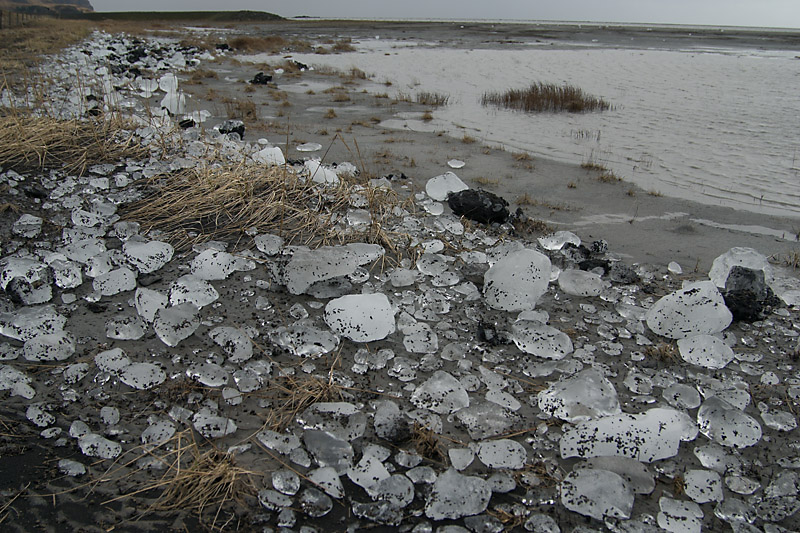 Ice and basaltic debris from Gigjökull, 25 km upriver, cover the bank of Markarfljot river. | 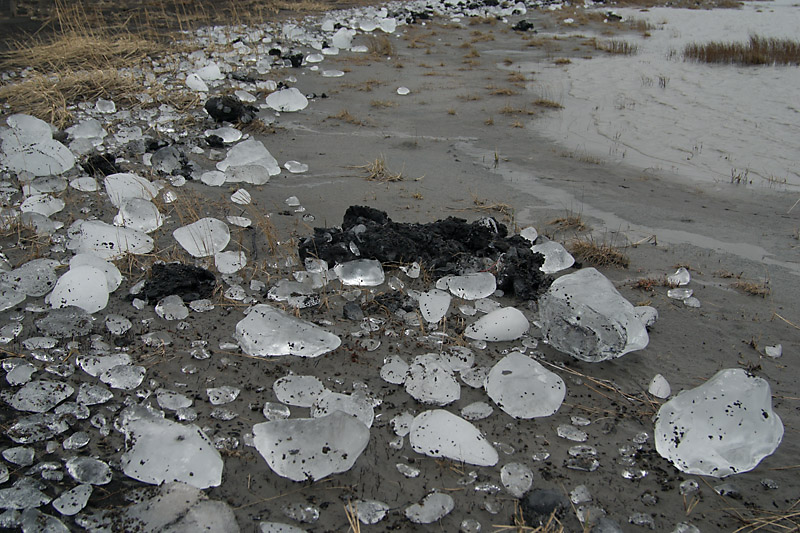 Abrasion has rounded the ice debris on its way from Gigjökull. | 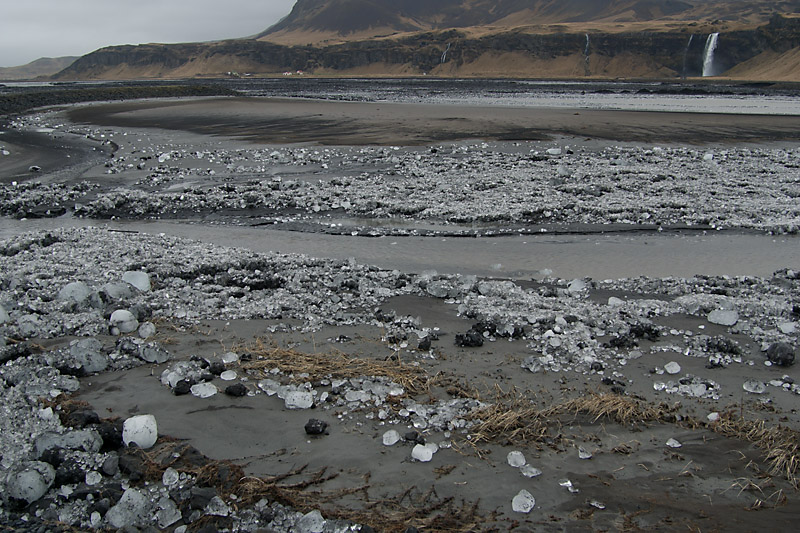 Thousands of ice and basalt blocks along Markarfljot. Seljalandsfoss (waterfall) in the background. | 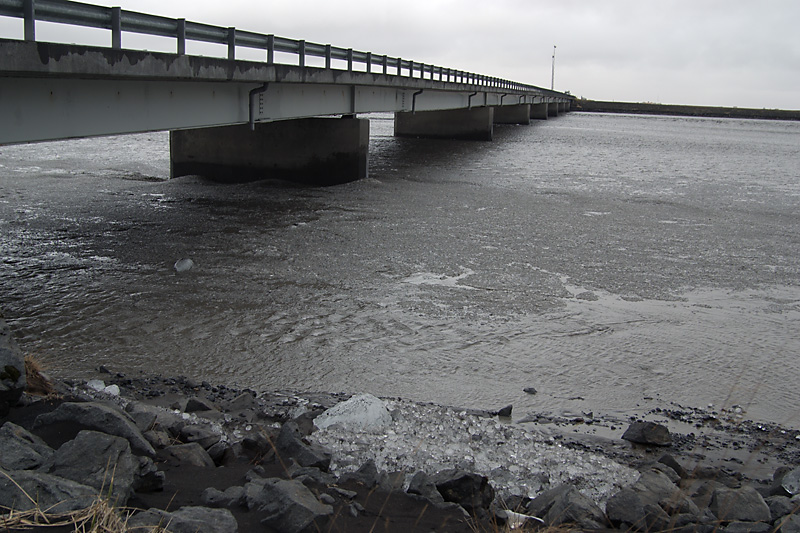 At the time of highest discharge the water level was just one meter under the bridge. |
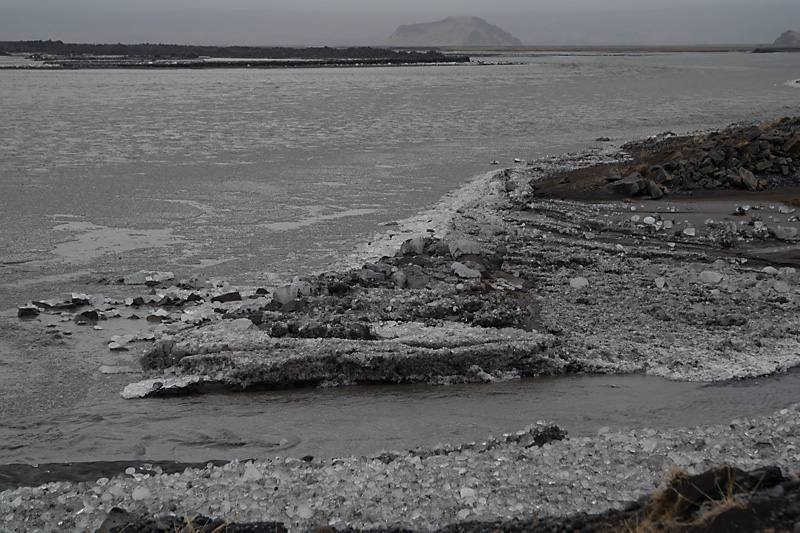 Markarfljot continues to transport ice floes from Gigjökull, some getting deposited along its banks. | 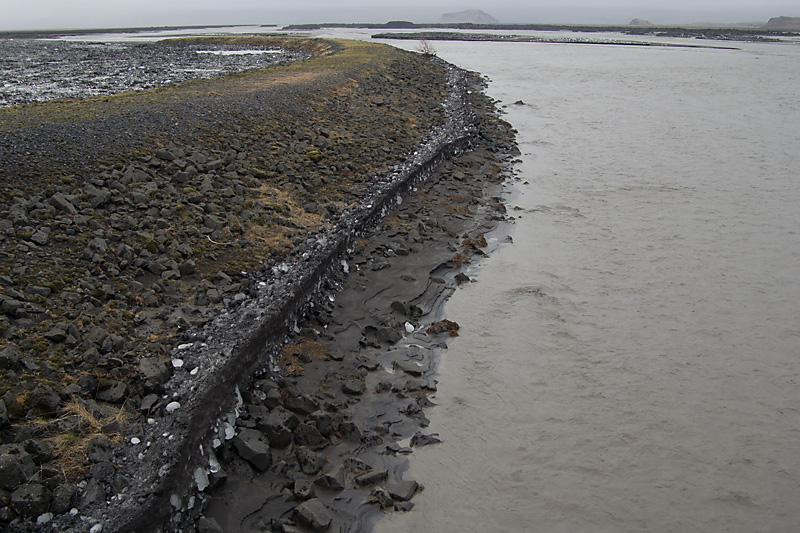 At highest discharge, the river was nearly overflowing its right bank: many ice blocks are stuck in the mud. | 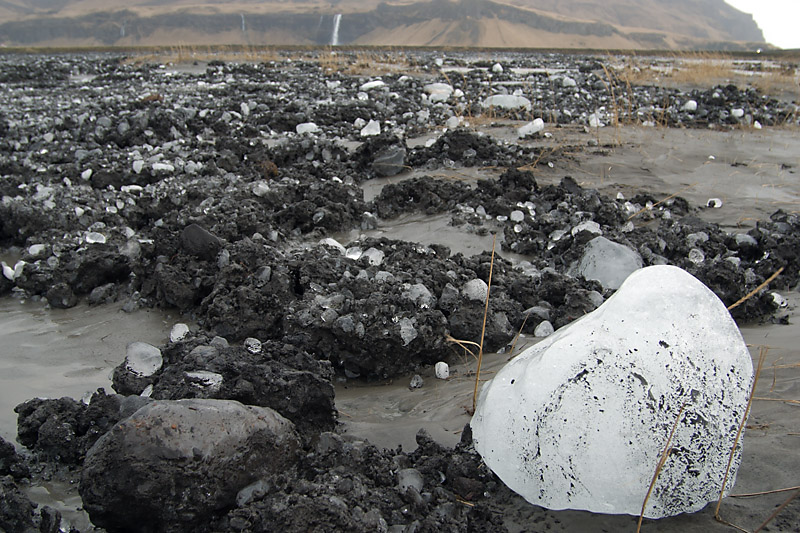 Mud, basaltic debris and rounded ice blocks from Gigjökull. | 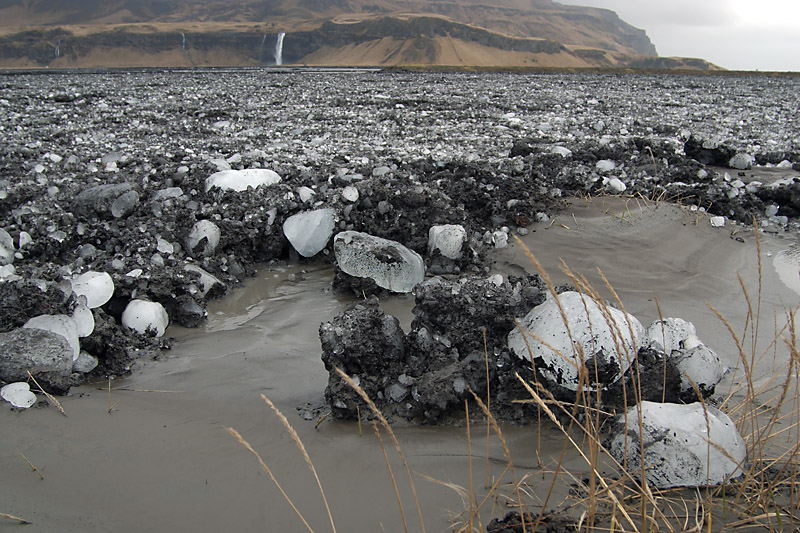 Basalt and ice depostits hundreds of meters frome the river's banks. |
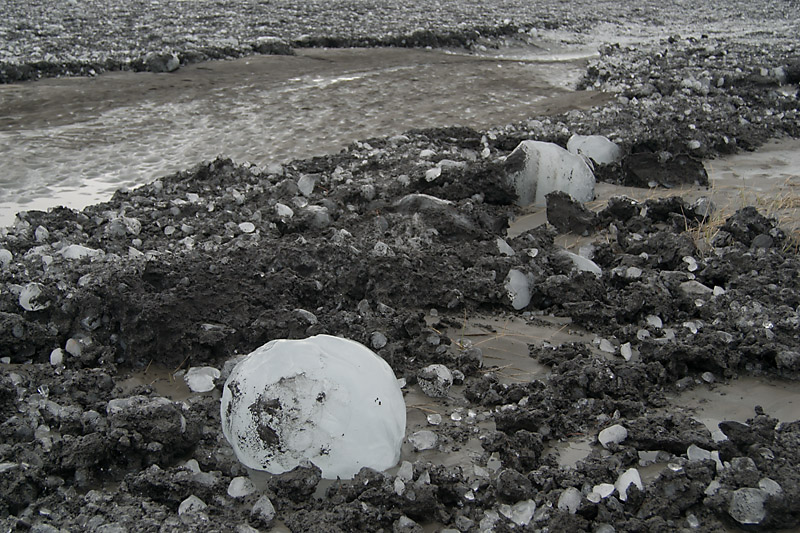 Some blocks have become almost perfectly spherical by abrasion. | 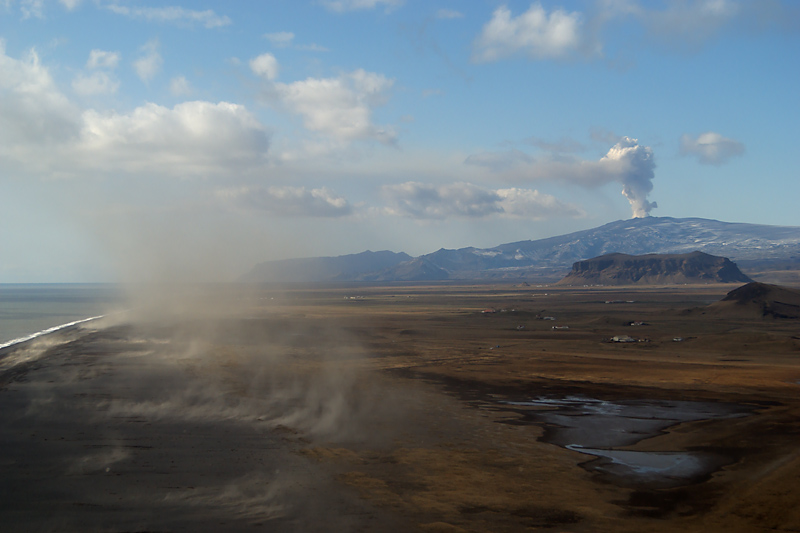 Wind uplifts ash from Eyjafjallajökull and will deposit is near cape Dyrhólaey. | 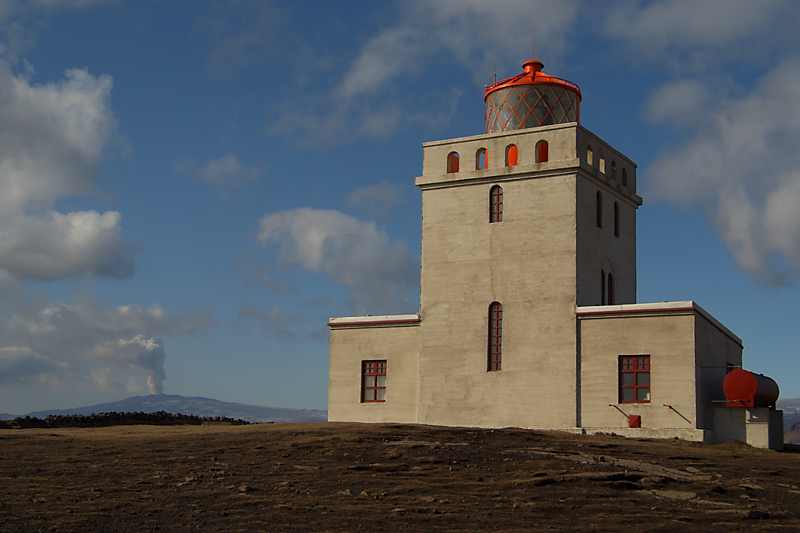 The dark, ash-covered Eyjafjallajökull icecap seen from Dyrhólaey lighthouse. | 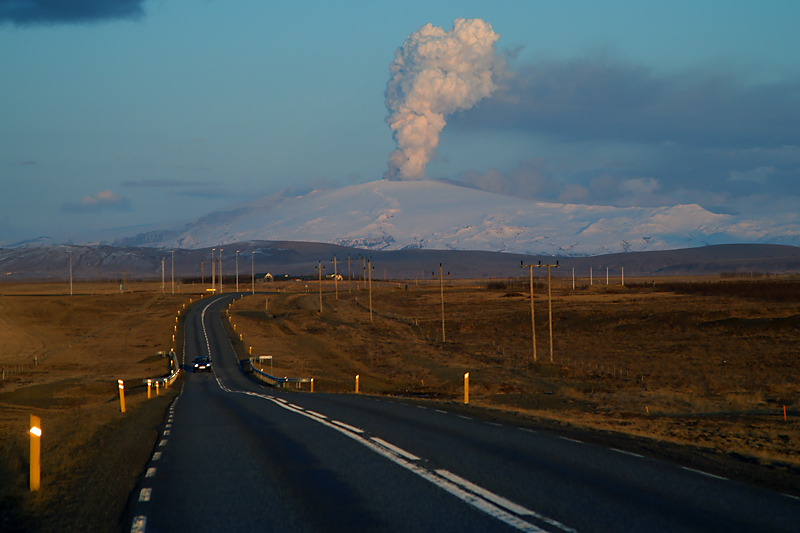 Parting shot of the white steam plume over Eyjafjallajökull after a strong snowfall (22 Apr 2010). |
| Photos by Marco Fulle, 16, 21 and 22 Apr 2010. |